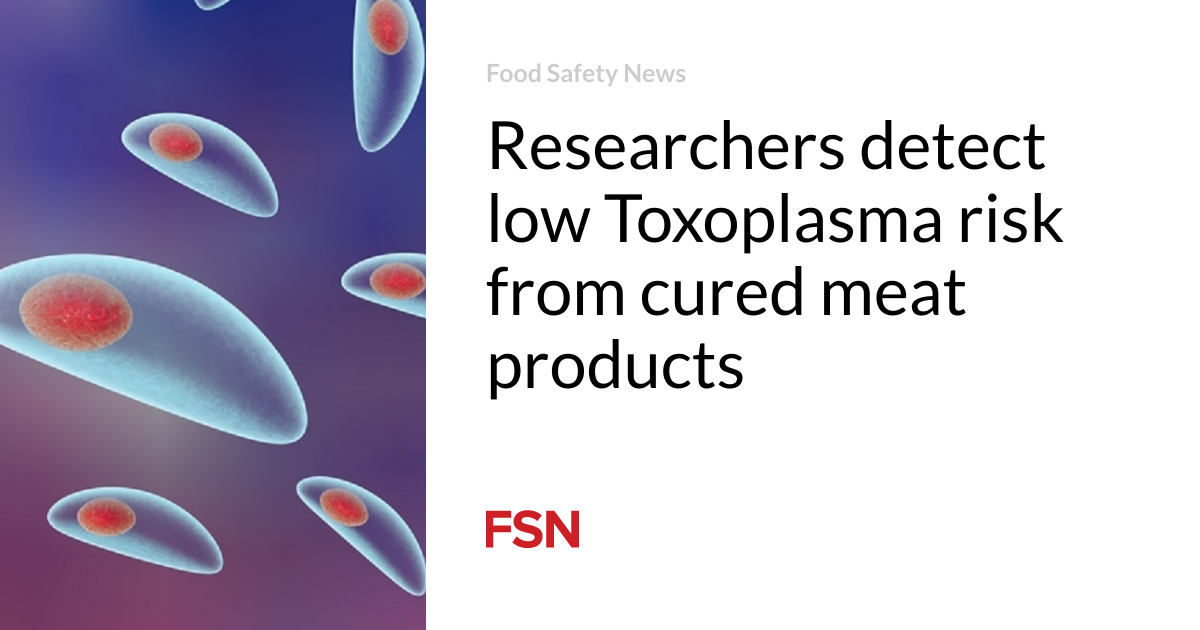Food
Researchers discover low Toxoplasma risk in cured meat products

Two studies have been published on Toxoplasma in Spanish dry-cured meat products and in meat from adult sheep.
Toxoplasmosis is an infection caused by Toxoplasma gondii. The transmission is attributed to eating undercooked or raw meat.
In the first study, published in the journal Food control552 samples of commercial dried hams, shoulders and dried sausages of different brands from different parts of Spain were purchased for analysis. This involved 311 dried hams/shoulders and 241 dried sausages, including samples of chorizo, fuet/longaniza and salchichón. Dried meat is a ready-to-eat product (RTE) and can be consumed without prior preparation.
Information on the labels of each meat product was collected to study the influence of, among other things, curing time and salt content on the viability of Toxoplasma. The loss of viability of the parasite in dry-cured meat products depends on factors such as curing time, salinity, water activity, pH and fat content.
Viable parasite detection
The presence of Toxoplasma gondii was detected in 57 samples. A Bioassay test showed that 47 of these items caused a seropositive response in mice. Of those samples, Toxoplasma gondii DNA in mouse brains was detected in six meat products, indicating its viability.
The parasite was viable in three dried ham/shoulder samples and three salchichón samples. All three samples of hams and shoulders in which Toxoplasma was viable came from white pigs, with a drying time of no more than 12 months.
All samples, except one, in which the parasite was viable were commercially available packaged slices. Although no information was available on the label, it is common practice to freeze the entire piece beforehand to facilitate the cutting process. If this procedure was used, it was not enough to kill the parasite and eliminate the risk, scientists said.
Statistical analysis showed that none of the examined variables on meat product labels had a significant impact on the viability of the parasite.
The results indicate a low prevalence of infectious forms of the parasite in cured meat products. However, some risk remains due to the inability of current meat inspection procedures in slaughterhouses to detect the parasite, and the healing process is not always effective.
Scientists said monitoring of commercial meat products was necessary to provide data for risk assessments.
“To ensure that consumers can make a safe choice between these ready-to-eat products, it is important that food labels contain information on the parameters relevant to the survival of the parasite, such as curing times or freezing. treatment of meat used as an ingredient,” scientists said.
Second study on mutton
In the second study, published in the journal Food and waterborne parasitologyresearchers evaluated Toxoplasma gondii in mutton.
A total of 216 muscle samples were analyzed and the prevalence of Toxoplasma gondii was 24.5 percent with 53 positive samples.
Samples came from the carcasses of female adult sheep slaughtered at a slaughterhouse in Tomelloso in Castilla-La Mancha. They were collected twice a week at different times between May 2019 and February 2020 by an official veterinarian.
The method used showed Toxoplasma gondii DNA, but not the presence of viable parasites that could cause human infection.
“This study confirms for the first time in Spain the presence of Toxoplasma gondii DNA in sheep meat. These results should encourage researchers to investigate the presence and viability of Toxoplasma gondii in lambs, with the aim of assessing the real risk of infection for the Spanish human population,” scientists said.
(To sign up for a free subscription to Food Safety News, click here.)







![[B-SIDE Podcast] The risks of using e-cigarettes and tobacco products, especially among young people](https://blogaid.org/wp-content/uploads/2024/07/B-SIDE-Podcast-The-risks-of-using-e-cigarettes-and-tobacco-products-300x240.jpg)
![[B-SIDE Podcast] The risks of using e-cigarettes and tobacco products, especially among young people](https://blogaid.org/wp-content/uploads/2024/07/B-SIDE-Podcast-The-risks-of-using-e-cigarettes-and-tobacco-products-80x80.jpg)


